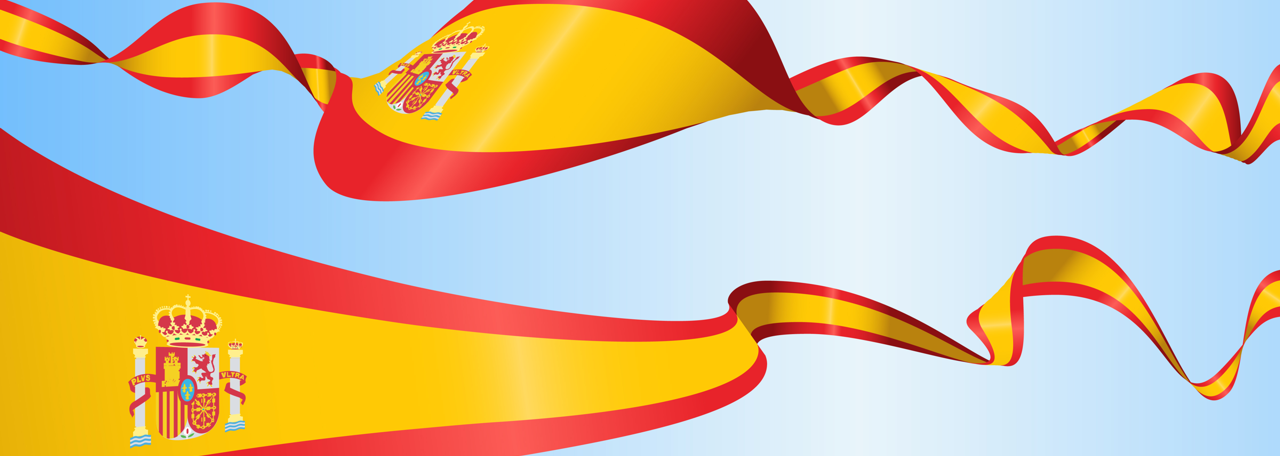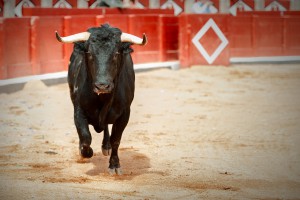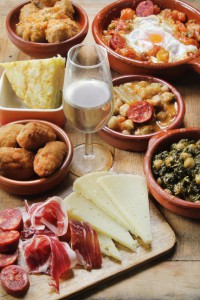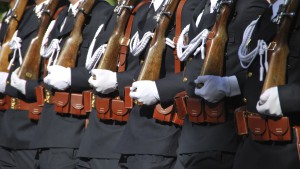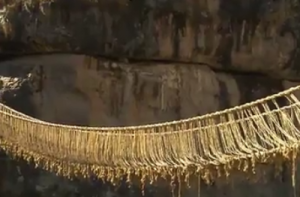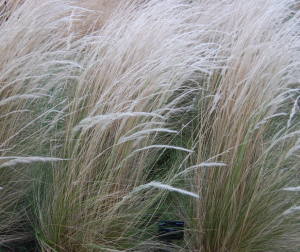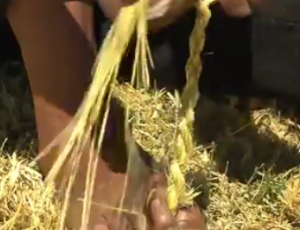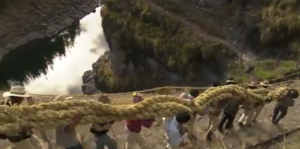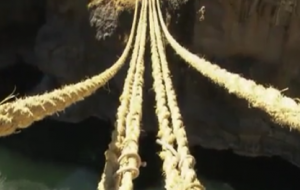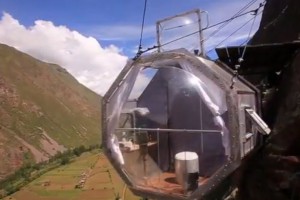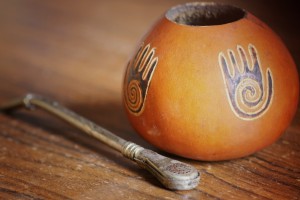Recent Articles
Madrid Art Gallery to Feature Arab Artwork

The Santander Art Gallery in Madrid is now hosting an exhibition entitled Looking at the World Around You: Contemporary Works from Qatar Museums. The exhibition started February 9, 2016 and will run through the middle of June.
Featuring over 160 pieces of art, works from 34 different artists will be featured. Most of the masterpieces are on loan from Doha’s Mathaf Arab Museum of modern art. The exhibition represents the history of contemporary Arab art through the eyes of Arab artists, though it does feature works from some international artists.
Some of the featured artists include greats such as Rene Magritte, as well as other popular contemporary names Mona Hatoum, Amal Kenawy and Shirin Neshat, Youssef Nabil. Egyptian sculpture artist Adam Henein is also on display and the video Cabaret Crusades by Wael Shawky as well.
Bullfighting Ban in the Balearic Islands
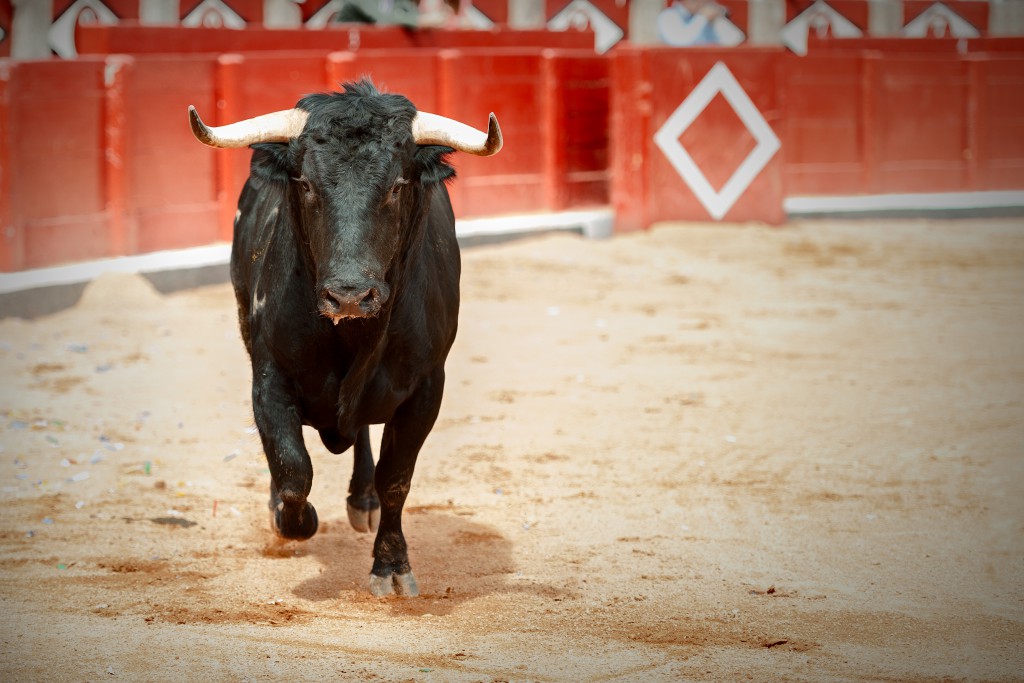
The Balearic Islands may become the third region in Spain to abolish bullfighting as of 2016. Both Catalonia and the Canaries have already taken a stand against bullfights banning them completely.
The bans have stemmed from a push by animal rights activists to protect bulls. Bullfighting was once seen as an art, but society has changed and bullfighting is now considered cruel. Bull-fights have already seen a great loss in spectators over the years.
Mallorca currently has four active bullrings: Palma, Alcúdia, Inca, and Muro. People in the municipality of Fornalutx are dissatisfied with the motion that would also outlaw the annual “Correbou” bull run. The event has been taking place since 1892 and the mayor of Fornalutx is trying to prevent the motion from becoming law in order to preserve the historical affair.
With 25 out of the 67 municipalities in the Balearics already declaring themselves bullfight free and voting in favor of the ban, 2015 probably held the last Correbou bull run.
Spanish Tapas
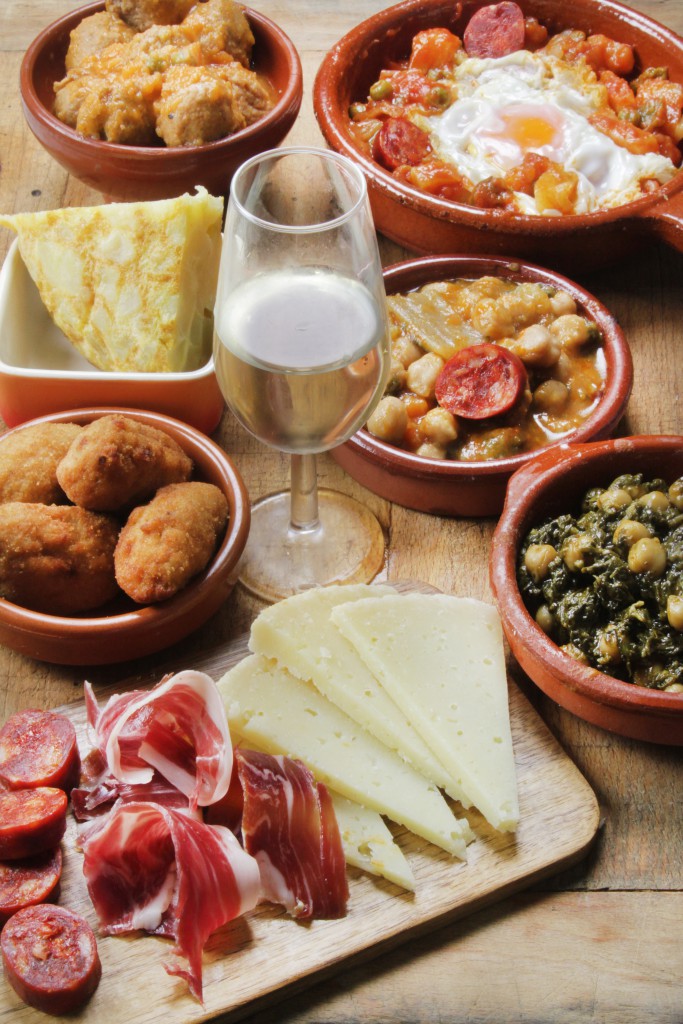
By Amanda Scott
It was rumored that Spanish tapas came about back in the thirteenth century, when King Alfonso X had to eats small snacks when drinking wine, due to illness. He passed a law stating that taverns and bars must serve food with beer and wine.
Tapas remain a popular part of the Spanish culture, especially in southern Spain. The word tapa in Spanish means ‘lid’, and the small plates were often set on top of drinks to keep insects out. The savory small dishes are often served as snacks or several tapas are paired together to make up a meal. Tapas are sometimes only served in the bar and larger entrees must be ordered when dining at a table. (more…)
Spain’s National Day
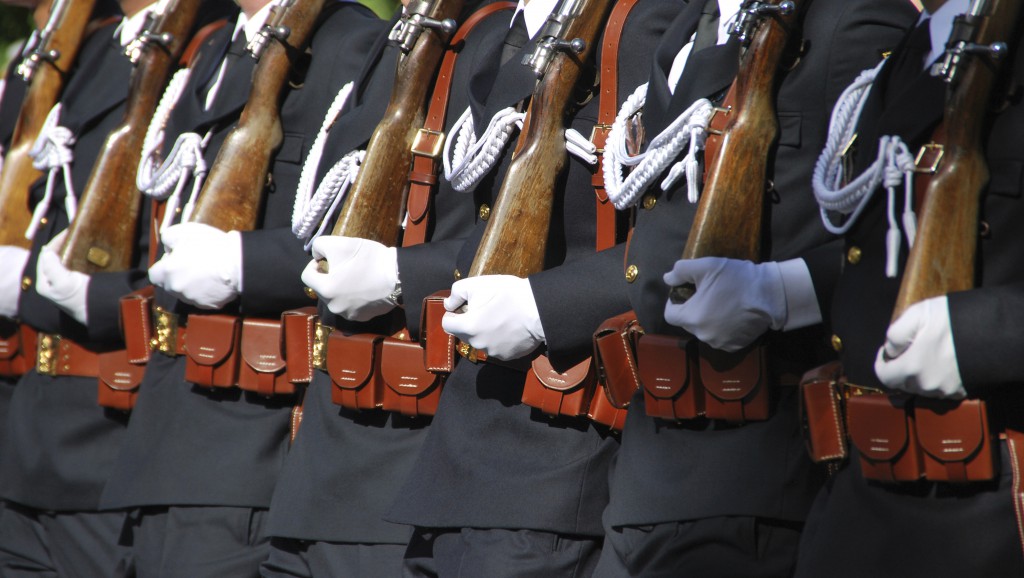
Yesterday, Monday October 12, 2015 in Madrid, Spain thousands of soldiers, all in dress uniform, marched in a military parade to celebrate Spain’s National Day. The holiday, known in Spain as Dia de la Hispanidad or Hispanic Day, commemorates the day that Christopher Columbus landed in the ‘New World’. It is also Spain’s armed forces day.
Armed forces aircraft performed a fly-by leaving red and yellow smoke trailing in the sky in honor of the Spanish flag. Onlookers lined the sidewalks of Paseo de la Castellana Boulevard, waving flags and cheering as King Felipe, Queen Letizia, and their children saluted the crowd.
Festivities took place in other historical cities in Spain as well, such as Barcelona and Pamplona.
The Q’eswachaka Bridge
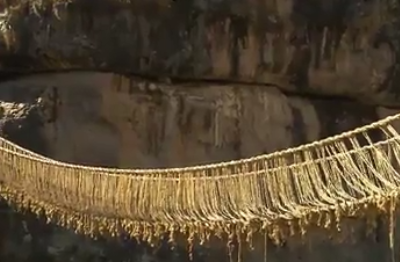
The Q’eswachaka Bridge (also spelled Qeswachaka, Keshwa Chaca or Keswachaka) is a rope bridge. It is slightly over 90 feet long, about 4 feet wide and spans 161 yards across the river Apurimac in Peru. This last remaining Inca rope bridge is an architectural piece of art; it is built using a traditional method that is over 500 years old.
Side view of the suspension bridge The actual walking path on the bridge
The bridge is solely made out of Ichu grass, also known as ‘feather grass.’ The bridge only remains strong for one year and therefore requires rebuilding from scratch every year.
For this event, about 700 people from the Andean towns of Quehue Huinchiri, Choccayhua, Ccolana and Chaupibanda come together to rebuild the bridge from scratch. Blades are woven and braided into dozens of bales of rope and then the ropes are linked to the bridge.
The first part is to braid it into strings, which will then be connected together.
Men carrying the ropes to be strung across the river.
The first ropes are linked to the cliffs.
When the bridge is completed it is dedicated by a traditional priest and the new bridge is celebrated with a festival.
This year, the Smithsonian is featuring Peru in their upcoming Folklife Festival. A dozen indigenous Inca craftsmen will weave together these grass ropes into a 60-foot span. Since there are no vertical cliffs in DC, the suspension bridge will be strung on the National Mall between Jefferson and Madison Avenues, where it will hover 16 feet above the ground. It should be able to hold the weight of ten people.
The finished bridge will then become part of the National Museum of the American Indians’ collections. One section in the new exhibition will be called “The Grand Inca Road: Engineering an Empire,” while another length of bridge will travel to the museum’s New York City location in time for the fall 2016 opening of the children’s imagiNATIONS Activity Center.
For more information, including a video that shows the building of the bridge, go to: http://www.smithsonianmag.com/smithsonian-institution/inca-rope-bridge-built-span-national-mall-washington-dc-180955609/?no-ist
Cusco and The Sacred Valley of the Incas, Peru

Flights from Lima, which is at sea level, to 11,000 foot high Cusco only take a little bit over one hour. On the plane you are told to take it easy for the next two or three days as the altitude sickness can affect you.
From the 13th into the 16th century Cusco was the capital of the Inca Empire. In 1983, UNESCO declared Cusco a World Heritage Site. Since then Cusco has become a main tourist attraction. Since it is recommended that you relax a few days after you arrive in Cusco, it is a good idea to explore the city and the Sacred Valley of the Incas while you acclimatize yourself to the high altitude. Throughout the city, signs are in English and many natives speak a bit of English, but it is always a good idea to practice some Spanish.
The Sacred Valley of the Incas has now an added attraction for any adventurer. Approximately 400 feet off the ground on the side of a cliff edge, you can enjoy an overnight stay at the Skylodge Adventure Suite, which offers a breathtaking panoramic view of the valley through a transparent luxury capsule. The suite comes complete with double beds, a dining area with prepared food, a bottle of wine and even a private bathroom (with curtains.) Each pod can sleep up to four people.
The main way to get to the capsule involves a two-hour climb via ferrata. The via ferrata is a pre-laid cabled climbing route supported with iron stepping rungs and pegs as well as cabled bridges and ladders. Coming down involves a five stage zipline, one stage of which is 1600 feet long. Adventurers are accompanied by experienced guides.
Skylodge writes its website: “Our vertically hanging transparent capsule suites are situated at the top of our mountain with a 300 degree view of the majestic sacred valley.”
Prices start at almost $300 per person and include private transportation to and from your hotel, a trained guide, equipment, snacks, a gourmet dinner and breakfast the next morning.
Take a look at this amazing video of the ascent and decent to and from the Skylodge: https://www.youtube.com/watch?v=U9dNHvvUBO0
What an adventure! Enjoy Peru!
Mate means friendship.
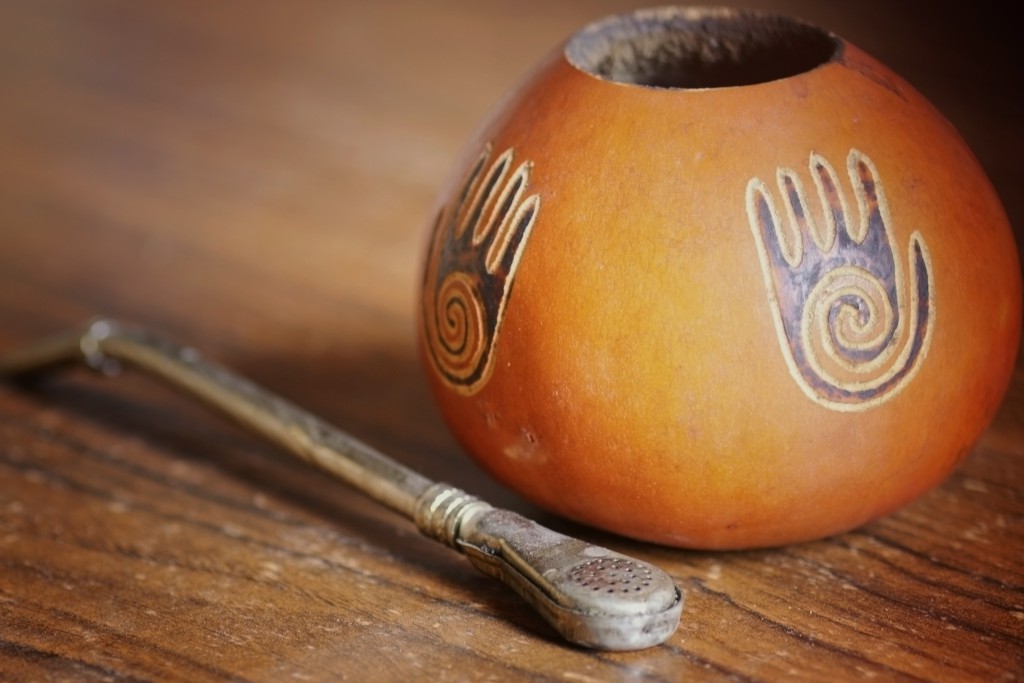
By Sabina Wrightsman
Mate, pronounced ‘mah-tay’, is a tea made from the South American yerba mate plant. Most of these yerba plants grow in South America, mainly in Argentina, some spread into Paraguay and Brazil. The yerba leaves and stems are harvested, then blanched, dried, aged, and finally cut into small pieces to be used for tea by adding hot water. The tea is traditionally consumed in a gourd with a metal straw, called ‘Bombilla’ in Spanish, and passed around among friends. It is a social event to drink mate, you hardly ever drink it alone. It is like a ritual among friends and workers as you share the same gourd and metal straw when drinking. It is said to give everybody energy. It also has a delicious, bold flavor. Mate has almost as much caffeine as coffee, but with the feel good chemicals of both tea and coffee.
NBA Hispanic Outreach

By Zak Rozsman
For several years now the National Basketball Association (NBA), has been celebrating Noche Latina to reach out and appeal to their Hispanic fan base. The NBA refers to this as their “Noches Éne-Bé-A” Hispanic marketing program. Part of this outreach involves featuring Spanish versions of certain teams’ jerseys. Some of the teams that have participated in this outreach are the Phoenix Suns, San Antonio Spurs, Los Angeles Lakers, Chicago Bulls, Miami Heat and the New York Knicks. Examples of the Hispanic versions of the jerseys are Los Suns, Los Spurs, Los Lakers, Los Bulls, El Heat and Nueva York and this is where the controversy begins. The NBA’s marketing research suggests that many people in the Spanish speaking community refer to their favorite team’s name in this fashion, with a combination of Spanish and English. We touched on this topic in a previous blog post titled “Gringonizing Spanish” https://www.worldtranslationcenter.com/blog-posts/gringonizing-spanish.
While a large majority of Hispanic fans appreciate the sentiment from the NBA to acknowledge this sector of the fan base there has always been a large population of fans and language purists that would prefer the full translation. Some examples of the full translation on the jerseys would be:
The Suns= Los Soles
The Bulls= Los Toros
The Spurs= Las Espuelas
The Heat = El Calor
Spanish Festivals
By Amanda Scott
Spain is known for its siestas and fiestas! Check out these unusual Spanish festivals:
The Baby Jumping Festival:
This festival known as El Colacho, takes place the first Sunday after the Catholic feast Corpus Christi, so the date will vary accordingly. Babies born within the year are swaddled and laid upon the ground. Adult men dressed as the Devil then jump over the infants. This old tradition is said to cleanse them of the original sin and provide a life protected from illness and evil.
The Snail Festival:
This festival is all about snails, well eating them that is. Called L’Aplec del Caragol, this fest takes place in Lleida in northern Spain. It is held near the end of May when over 12 tons of snails are shipped in. There is even a snail eating competition. Concerts and other activities are available as well if you can’t stomach the snails.
New Year’s Eve in August Festival:
Spaniards love New Year’s so much they actually celebrate it twice a year. After a power outage, on actual New Year’s Eve in Bérchules, Spain, ruined their party, the town decided to celebrate the occasion with two fiestas, once on its original December 31st date and again in August. NYE in August is a full on celebration with 8,000 people counting down the seconds until midnight. They even have fake snow as the clock strikes twelve.
The Tomato Throwing Festival:
This one takes place in August as well. Known as La Tomatina, the festival begins with a man trying to climb a greased pole in hopes of reaching a ham placed at the top. Water cannons fire and tomatoes are dumped into the streets of Bunol as the climber reaches the top. The only rules to this food fight are that women must wear white and men must go shirtless.
And last but not least:
Spain actually has a holiday that celebrates being alive. This festival is held in honor of the patron saint of resurrection. This festival includes Mass, a procession through town, and fireworks. The strangest part is that you have to bring your own coffin. You can either carry one or be carried in one. A festivity that celebrates you still being alive is just as good as any I guess.

